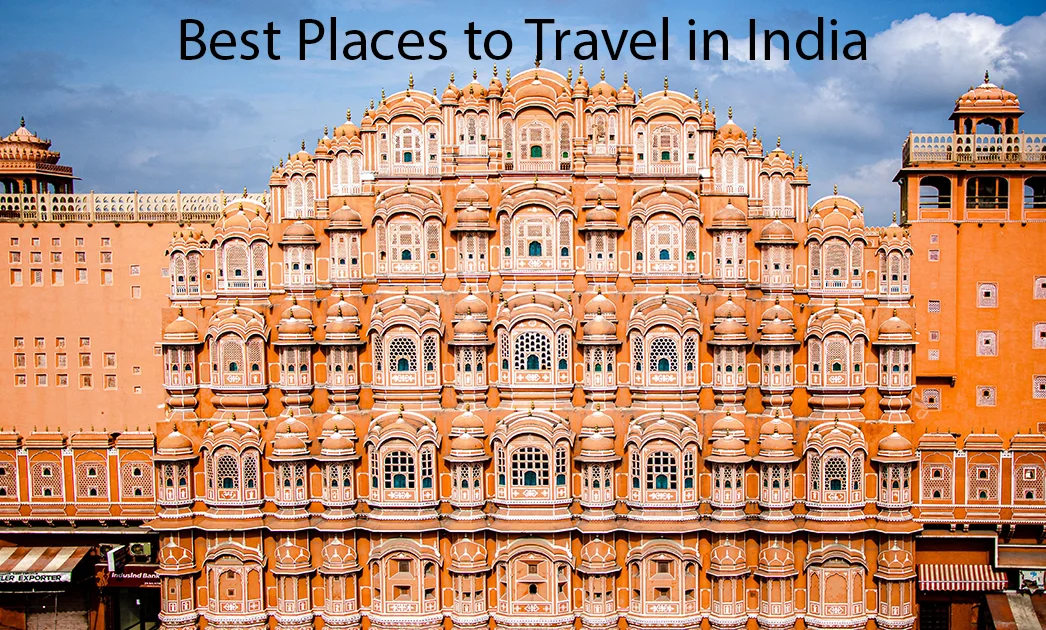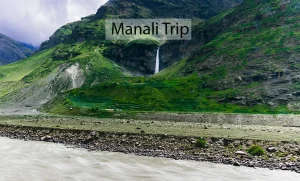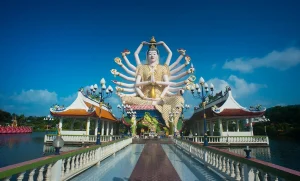Best Places to Visit in India
India, a land as vast and diverse as the myriad colors that paint its landscapes, stands as a testament to the beauty of unity in diversity. From the snow-capped peaks of the Himalayas to the sun-kissed shores of its southern coast, India is a tapestry woven with threads of culture, tradition, and natural splendor.
Picture a canvas painted with a spectrum of hues, each representing a unique facet of India’s cultural mosaic. India is home to a staggering array of languages, religions, traditions, and cuisines, making it a microcosm of the world. The northern regions boast the majestic Himalayas, where adventure seekers find solace in the serene valleys of Manali and the spiritual energy of Rishikesh.
In the heartland, Delhi, the bustling capital, serves as a melting pot of modernity and ancient history. Agra, with the iconic Taj Mahal, narrates tales of love and architectural brilliance. Jaipur, the Pink City, stands as a living testament to Rajputana grandeur. As we move south, the beaches of Goa beckon with their carefree vibes, while Kerala’s backwaters offer a tranquil escape into nature.
In the west, Mumbai, the city that never sleeps, pulsates with energy, while the deserts of Rajasthan narrate stories of valor amidst golden sands. Eastern India, with Kolkata at its helm, showcases cultural richness, and the northeast, with its untouched landscapes, offers a glimpse into India’s pristine natural beauty.
Importance of Travel in Exploring India
Travel, in its essence, is a journey of self-discovery, and exploring India provides a unique canvas for this odyssey. Every step unveils a new chapter, each city narrating its own story, and every encounter leaves an indelible mark on the traveler’s soul. Beyond the monuments and landscapes, it is the people and their stories that add depth to the travel experience.
India’s diversity is not merely geographical; it resides in the hearts of its people. By traversing its length and breadth, one can witness the coexistence of traditions, languages, and lifestyles that form the rich tapestry of the nation. Travel fosters a deep connection with the roots of humanity, breaking down barriers and fostering an appreciation for the shared human experience.
Northern India
Northern India, a region adorned with majestic mountains, historical marvels, and spiritual sanctuaries, beckons travelers to embark on a journey of discovery.
Himalayan Retreats
Manali: Nestled in the embrace of the Himalayas, Manali stands as an adventure enthusiast’s paradise. With its snow-capped peaks and lush valleys, this quaint town offers a plethora of activities, from skiing and paragliding to trekking in the Solang Valley. The charm of Manali lies not only in its thrilling escapades but also in the serene landscapes that invite introspection amid nature’s grandeur.
Shimla: As the “Queen of the Hills,” Shimla exudes colonial charm against a backdrop of cedar-clad hills. The Ridge, with its panoramic views, and the Mall Road, bustling with life, narrate tales of a bygone era. Whether strolling through the historic Christ Church or riding the toy train on the Kalka-Shimla Railway, Shimla captivates with its timeless elegance.
Rishikesh: Nestled along the banks of the Ganges, Rishikesh is not merely a destination; it is a spiritual retreat. Known as the “Yoga Capital of the World,” Rishikesh is a haven for seekers of inner peace and self-discovery. The rhythmic chants by the river, the iconic Laxman Jhula, and the ashrams that line the ghats create an ambiance that resonates with the spiritual seeker.
Cultural Capitals
Delhi: Delhi, the vibrant capital, seamlessly blends tradition and modernity. From the historic Red Fort and Jama Masjid to the contemporary allure of Connaught Place, Delhi is a kaleidoscope of diverse experiences. The bustling markets, street food delights, and the serenity of Lotus Temple showcase the dynamic spirit of this cultural hub.
Agra: Agra, synonymous with the epitome of love, the Taj Mahal, captivates millions with its ethereal beauty. Beyond the ivory-white marvel, Agra houses the Agra Fort and Fatehpur Sikri, each echoing tales of Mughal grandeur. The city serves as a living testament to the architectural brilliance that defined an era.
Jaipur: Stepping into Jaipur is like entering a world of regal splendor. The Pink City, adorned with palaces like Hawa Mahal and City Palace, invites visitors into the opulent lifestyle of the Rajput kings. The vibrant bazaars, where the echo of traditional folk music mingles with the fragrance of spices, add an enchanting dimension to the city’s allure.
Spiritual Journeys
Varanasi: Varanasi, the oldest living city in the world, is a spiritual pilgrimage on the banks of the sacred Ganges. Ghats like Dashashwamedh and Manikarnika witness the ebb and flow of life, death, and spirituality. The evening Ganga Aarti, a symphony of lights and chants, epitomizes the eternal spirit of Varanasi.
Amritsar: In the heart of Punjab, Amritsar beckons with the resplendent Golden Temple. A symbol of Sikhism’s spiritual and cultural richness, the temple’s golden façade reflects in the serene waters of the Amrit Sarovar. The langar, offering free meals to all, embodies the principles of equality and community.
Haridwar: Haridwar, at the foothills of the Himalayas, serves as the gateway to the gods. The Ganga Aarti at Har Ki Pauri, the ancient temples, and the aura of spirituality make Haridwar a timeless destination for seekers and devotees alike.
Southern India
Southern India, a captivating region known for its diverse landscapes and rich cultural heritage, invites travelers to immerse themselves in a tapestry of experiences. From the sun-kissed beaches to the historical marvels and the lush green escapes, Southern India unfolds as a treasure trove of exploration.
Beach Paradises
Goa: Goa, with its vibrant beaches and laid-back atmosphere, is a perennial favorite among travelers seeking a perfect blend of relaxation and adventure. The golden sands of Calangute and the vibrant nightlife of Baga Beach offer a playground for sun-seekers and party enthusiasts alike. The colonial architecture of Old Goa and the spice plantations in the hinterlands add a unique cultural flavor to this coastal haven.
Kerala: Kerala, often referred to as “God’s Own Country,” is a canvas painted with backwaters, lush greenery, and serene beaches. The backwaters of Alleppey and Kumarakom offer a tranquil journey on traditional houseboats, while the tea plantations of Munnar and the wildlife of Periyar National Park showcase the diversity of this picturesque state.
Gokarna: For those seeking an offbeat coastal experience, Gokarna emerges as a hidden gem. This laid-back town, adorned with pristine beaches like Om and Kudle, exudes a serene vibe. The Mahabaleshwar Temple and the trekking trails along the coast add a touch of spirituality and adventure to this coastal haven.
Historical Marvels
Hampi: The ruins of Hampi, a UNESCO World Heritage Site, transport visitors to the grandeur of the Vijayanagara Empire. The intricate architecture of Virupaksha Temple and the massive boulders strewn across the landscape create an otherworldly ambiance. Exploring the ancient city and the Royal Enclosure is like stepping back in time to an era of architectural brilliance.
Mysuru: Mysuru, with its opulent palaces and regal charm, stands as a testament to the royal heritage of Karnataka. The Mysore Palace, illuminated in the evenings, is a spectacle of grandeur. The city’s cultural richness unfolds during the lively Dasara festival, while the tranquil Brindavan Gardens offer a peaceful retreat.
Chennai: Chennai, the capital of Tamil Nadu, serves as the gateway to the cultural tapestry of South India. The Marina Beach, one of the longest urban beaches in the world, invites locals and tourists alike for a leisurely stroll. The Kapaleeshwarar Temple and Fort St. George showcase the city’s historical roots, while the vibrant street food scene adds a flavorful touch to the visit.
Nature Escapes
Ooty: Nestled in the Nilgiri Hills, Ooty, Tamil Nadu is a charming hill station known for its scenic landscapes and pleasant climate. The Ooty Botanical Gardens, Nilgiri Mountain Railway, and the serene Ooty Lake offer a perfect retreat for nature lovers. The tea estates and eucalyptus groves add to the allure of this “Queen of the Nilgiris.”
Coorg: Coorg (Karnataka), often referred to as the “Scotland of India” enchants visitors with its mist-covered hills and coffee plantations. The Abbey Falls and Raja’s Seat offer breathtaking views of the Western Ghats, while the Dubare Elephant Camp provides an opportunity to connect with nature and wildlife.
Thekkady: Thekkady, situated in the heart of the Periyar National Park, is a haven for wildlife enthusiasts. The Periyar Tiger Reserve, with its boat safaris on the lake, allows visitors to witness the diverse flora and fauna of the region. The spice plantations surrounding Thekkady add a fragrant and educational dimension to the visit.
Western India
Western India, a vibrant region that encapsulates the glitz of Bollywood, the regal splendor of Rajasthan, and the tranquil allure of coastal gems, beckons travelers to embark on a journey where diverse experiences seamlessly converge.
Mumbai: The City that Never Sleeps
Bollywood and Glamour: Mumbai, often hailed as the “City of Dreams,” is synonymous with the glamour and glitz of Bollywood. The city’s film industry not only influences Indian cinema but resonates globally. Tourists can experience the cinematic magic by taking a Bollywood studio tour or catching a glimpse of a live film shoot. The vibrant colors, energetic dance sequences, and the chance to spot Bollywood celebrities add a touch of star-studded allure to the city.
Historical Landmarks: Beyond the glamour, Mumbai is steeped in history, with landmarks that narrate tales of colonial rule and the city’s evolution. The Gateway of India, overlooking the Arabian Sea, stands as an iconic symbol of Mumbai. The Chhatrapati Shivaji Terminus, a UNESCO World Heritage Site, showcases Victorian Gothic architecture. Exploring the Elephanta Caves, dedicated to Lord Shiva, adds a mystical touch to Mumbai’s historical narrative.
Rajasthan Revisited
Udaipur: Udaipur, the “Venice of the East,” captivates visitors with its romantic ambiance and majestic architecture. The City Palace, overlooking Lake Pichola, reflects the grandeur of the Mewar dynasty. The serene boat ride on the lake, with the backdrop of the Aravalli Hills, provides a picturesque view of the City of Lakes.
Jodhpur: Jodhpur, known as the “Blue City” for its azure-hued buildings, stands as a testament to Rajasthan’s vibrant culture. The Mehrangarh Fort, towering above the city, offers panoramic views of the blue labyrinth below. The bustling markets of the old town, with their traditional textiles and spices, provide a sensory immersion into the local way of life.
Jaisalmer: Jaisalmer, with its golden-hued architecture, is a desert gem that transports visitors to a bygone era. The Jaisalmer Fort, a UNESCO World Heritage Site, rises majestically from the Thar Desert. Exploring the intricately carved havelis and witnessing the sunset at the Sam Sand Dunes, where the golden hues come alive, add a magical touch to the Jaisalmer experience.
Coastal Charms
Dwarka: Dwarka, an ancient city by the Arabian Sea, holds immense religious significance for Hindus. The Dwarkadhish Temple, dedicated to Lord Krishna, is a sacred pilgrimage site. The Gomti Ghat and Rukmini Temple add to the spiritual ambiance, making Dwarka a destination where mythology and history intertwine.
Diu: Diu, a tranquil island getaway, is a hidden gem on the western coast. The Diu Fort, with its panoramic views of the Arabian Sea, showcases Portuguese architectural influences. Naida Caves and the serene Nagoa Beach offer a retreat into nature, while the fusion of Indian and Portuguese cultures is evident in the local cuisine and vibrant street markets.
Western India invites travelers to witness the seamless blend of history, culture, and natural beauty.
Eastern India
Eastern India, a region steeped in cultural richness, ancient traditions, and pristine landscapes, invites travelers to unravel its diverse tapestry. From the cultural vibrancy of Kolkata to the temple trails of Odisha and the enchanting beauty of the Northeast, Eastern India unfolds as a unique and captivating destination.
Kolkata: Cultural Capital of India
Durga Puja and Festivals: Kolkata, the Cultural Capital of India, pulsates with life during the grand celebration of Durga Puja. The city transforms into a vibrant canvas of art, music, and festivities during this annual event. Elaborate pandals, artistic idols of Goddess Durga, and the spirit of unity and joy make Durga Puja an unparalleled experience. The city’s calendar is adorned with other festivals, creating a continuous celebration of cultural diversity.
Historical Significance: Kolkata, with its colonial past, is a treasure trove of historical landmarks. The Victoria Memorial, a majestic marble structure, stands as a tribute to the British Queen Victoria. The Howrah Bridge, an iconic engineering marvel, connects the city across the Hooghly River. Strolling through the streets of North Kolkata, with its colonial-era buildings and narrow lanes, offers a glimpse into the city’s historical roots.
Odisha Odyssey
Bhubaneswar: Bhubaneswar, known as the Temple City, is adorned with ancient temples that narrate tales of Odisha’s rich history. The Lingaraja Temple, dedicated to Lord Shiva, is a masterpiece of Kalinga architecture. The Mukteshwar Temple and Rajarani Temple showcase intricate carvings, transporting visitors to a bygone era. Bhubaneswar, with its numerous temples, is a spiritual journey through time.
Puri: Puri, situated on the Bay of Bengal, is famous for the revered Jagannath Temple. The Rath Yatra, an annual chariot festival, attracts millions of devotees. The golden beaches of Puri, with their pristine sands and roaring waves, offer a serene escape. Exploring the Konark Sun Temple, a UNESCO World Heritage Site, adds a touch of architectural marvel to the Puri experience.
Northeastern Delights
Meghalaya: Meghalaya, the “Abode of Clouds,” captivates with its lush landscapes and cascading waterfalls. The living root bridges of Cherrapunji, formed by entwining the roots of rubber trees, are a testament to indigenous engineering. The clean and serene Umiam Lake and the misty Mawlynnong village, known as the cleanest village in Asia, showcase Meghalaya’s natural beauty and sustainable living practices.
Sikkim: Sikkim, nestled in the Himalayas, is a gem of northeastern India. The Nathula Pass, at the Indo-China border, offers breathtaking views of snow-capped peaks. Gangtok, the capital, is adorned with monasteries like Rumtek and Enchey, providing a tranquil retreat. The colorful Tsomgo Lake and the spiritual ambiance of Tashiding Monastery contribute to Sikkim’s charm as a Himalayan haven.
Hidden Charms of Ladakh, Andaman and Nicobar Islands, and Spiti Valley
Three distinct and lesser-explored destinations – Ladakh, the Andaman and Nicobar Islands, and the Spiti Valley – each with its unique appeal.
Ladakh: Land of High Passes
Nestled high in the Himalayas, Ladakh is a land of stark beauty, rugged landscapes, and serene monasteries. Known as the “Land of High Passes,” Ladakh is a haven for adventure enthusiasts and seekers of tranquility alike. The winding roads, surrounded by snow-capped peaks, lead to some of the world’s highest motorable passes like Khardung La and Chang La.
The monasteries, perched on rocky cliffs, offer not just spiritual solace but also breathtaking views of the surrounding mountains. Places like Pangong Lake, with its ever-changing hues, and the Nubra Valley, dotted with sand dunes and double-humped camels, add a surreal touch to the Ladakh experience. The simplicity of life in Ladakh, combined with the warm hospitality of the locals, makes it a destination where time seems to slow down, allowing visitors to connect with nature and themselves.
Andaman and Nicobar Islands
Far away from the mainland, the Andaman and Nicobar Islands beckon with their turquoise waters, coral reefs, and pristine beaches. This tropical paradise is a hidden gem in the Bay of Bengal, offering a perfect blend of relaxation and adventure. Havelock Island, with its Radhanagar Beach, consistently ranked among the best beaches globally, is a testament to the islands’ unspoiled beauty.
Snorkeling and scuba diving in the crystal-clear waters reveal vibrant coral formations and a rich underwater ecosystem. The Cellular Jail in Port Blair, a historical reminder of India’s struggle for independence, adds a touch of history to the tropical landscape. The islands’ indigenous cultures, showcased in the Anthropological Museum, offer a glimpse into the diverse heritage of this secluded paradise.
Spiti Valley: Desert Mountain Valley
Tucked away in the trans-Himalayan region, Spiti Valley is a desert mountain valley that enchants with its stark landscapes and ancient monasteries. Accessible only during the summer months due to heavy snowfall, Spiti offers a unique blend of barren mountains, crystalline rivers, and traditional Tibetan culture. The Key Monastery, perched dramatically on a hill, is not just a religious site but also a vantage point offering panoramic views of the valley.
Chandratal Lake, surrounded by snow-capped peaks, is a serene destination that captivates with its pristine beauty. The road trip through Spiti, passing through high-altitude villages like Kaza and Langza, provides an exhilarating adventure for those seeking an offbeat escapade. The simplicity of life in Spiti, coupled with the surreal landscapes, makes it a destination where one can experience the raw beauty of the Himalayas away from the tourist crowds.
Travel Tips for a Seamless Adventure
From choosing the best time to visit different regions to understanding cultural nuances and navigating transportation and accommodation, this guide aims to make your travel smoother and more enjoyable.
Best Time to Visit Different Regions
Northern India
Himalayan Retreats: Visit during the summer months (May to June) for pleasant weather, while winter (October to March) is ideal for snow enthusiasts.
Cultural Capitals: October to March is generally the best time to explore Delhi, Agra, and Jaipur, as the weather is cooler and more comfortable.
Spiritual Journeys: Plan your visit to Varanasi, Amritsar, and Haridwar during the winter months to avoid extreme temperatures.
Southern India
Beach Paradises: November to February is ideal for Goa, Kerala, and Gokarna, offering a perfect balance of sun and mild temperatures.
Historical Marvels: Southern cities like Mysuru and Chennai are best explored during the winter months when the weather is pleasant.
Western India
Mumbai: October to March is preferable to avoid the monsoon season, while the city is alive with festivals and events.
Rajasthan Revisited: Winter months (October to March) are ideal, with pleasant temperatures for exploring Udaipur, Jodhpur, and Jaisalmer.
Coastal Charms: Explore Dwarka and Diu during the winter months when the weather is mild and enjoyable.
Eastern India
Kolkata: October to March is the best time, coinciding with the festive season and milder temperatures.
Odisha Odyssey: Visit Bhubaneswar and Puri from October to March for comfortable weather.
Northeastern Delights: Summer months (April to June) are ideal for Meghalaya and Sikkim, offering pleasant temperatures.
Offbeat Destinations
Ladakh: Late spring to early autumn (June to September) is the main tourist season, with clear roads and open attractions.
Andaman and Nicobar Islands: November to April is the dry season, perfect for water activities and beach exploration.
Spiti Valley: Late spring to early fall (June to September) is the best time, as roads are open, and temperatures are more comfortable.
Cultural Sensitivity and Etiquette
Dress Modestly: In many cultural and religious sites, dressing modestly is appreciated. Consider covering shoulders and knees, especially in temples and mosques.
Respect Local Customs: Be aware of local customs and traditions. Remove your shoes when entering someone’s home or religious places.
Greetings: The traditional Indian greeting is “Namaste.” A slight bow with palms pressed together conveys respect.
Public Affection: Public displays of affection are often frowned upon in many places. It’s advisable to keep such expressions private.
Photography Etiquette: Always seek permission before taking photographs, especially of people or in religious sites. Some places may have restrictions on photography.
Transportation and Accommodation Tips
Transportation
Local Transport: Embrace local transportation options like auto-rickshaws, cycle rickshaws, and metro systems for an authentic experience.
Booking Tickets: Plan and book long-distance transportation in advance, especially during peak travel seasons.
Travel Apps: Utilize travel apps for real-time information on transportation schedules, fares, and routes.
Accommodation
Diverse Options: India offers a range of accommodation, from luxury hotels to budget-friendly guesthouses and homestays.
Book in Advance: Secure your accommodation in popular destinations well in advance, especially during festivals and peak seasons.
Local Recommendations: Consult locals or online reviews for authentic insights into accommodation options.




